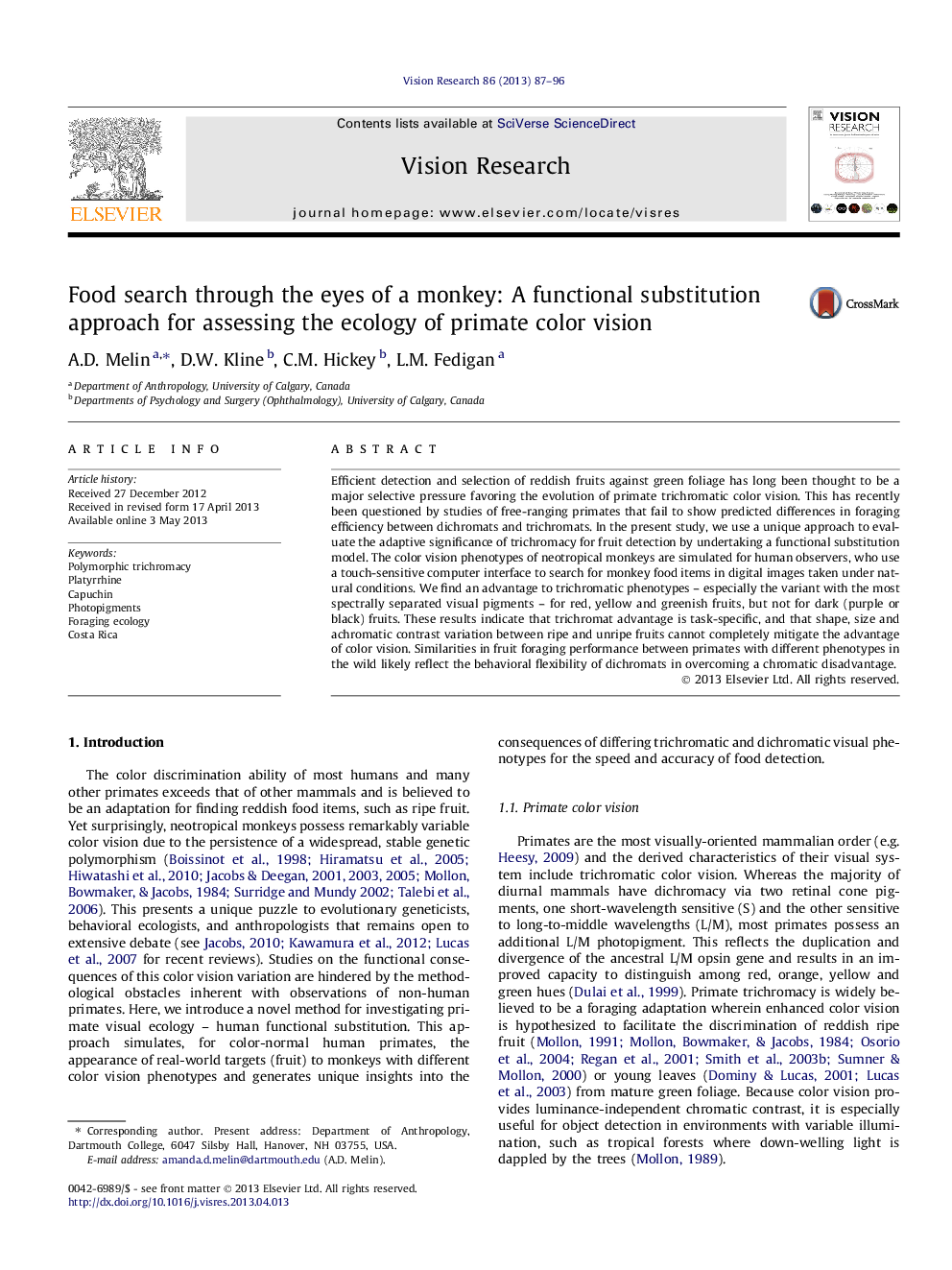| Article ID | Journal | Published Year | Pages | File Type |
|---|---|---|---|---|
| 4033804 | Vision Research | 2013 | 10 Pages |
•Functional substitution used to simulate monkey color vision for human observers.•Color deficient humans also recruited for comparison.•Trichromatic phenotypes advantaged for locating ripe fruits from in situ images.•Color vision is important in the foraging ecology of wild primates.•Similar feeding rates between phenotypes in field studies reveal behavioral compensation by dichromats.
Efficient detection and selection of reddish fruits against green foliage has long been thought to be a major selective pressure favoring the evolution of primate trichromatic color vision. This has recently been questioned by studies of free-ranging primates that fail to show predicted differences in foraging efficiency between dichromats and trichromats. In the present study, we use a unique approach to evaluate the adaptive significance of trichromacy for fruit detection by undertaking a functional substitution model. The color vision phenotypes of neotropical monkeys are simulated for human observers, who use a touch-sensitive computer interface to search for monkey food items in digital images taken under natural conditions. We find an advantage to trichromatic phenotypes – especially the variant with the most spectrally separated visual pigments – for red, yellow and greenish fruits, but not for dark (purple or black) fruits. These results indicate that trichromat advantage is task-specific, and that shape, size and achromatic contrast variation between ripe and unripe fruits cannot completely mitigate the advantage of color vision. Similarities in fruit foraging performance between primates with different phenotypes in the wild likely reflect the behavioral flexibility of dichromats in overcoming a chromatic disadvantage.
